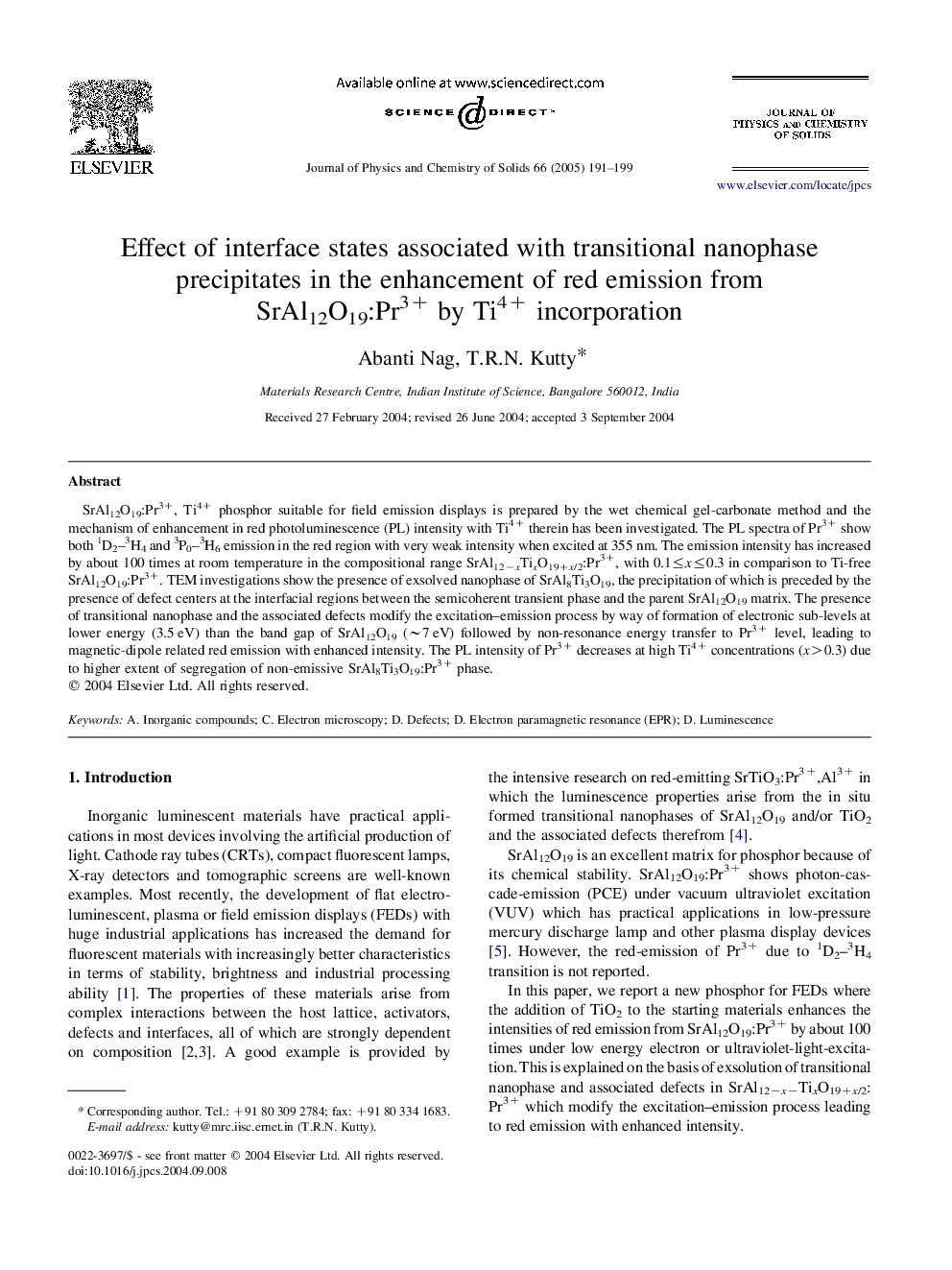| Article ID | Journal | Published Year | Pages | File Type |
|---|---|---|---|---|
| 9781876 | Journal of Physics and Chemistry of Solids | 2005 | 9 Pages |
Abstract
SrAl12O19:Pr3+, Ti4+ phosphor suitable for field emission displays is prepared by the wet chemical gel-carbonate method and the mechanism of enhancement in red photoluminescence (PL) intensity with Ti4+ therein has been investigated. The PL spectra of Pr3+ show both 1D2-3H4 and 3P0-3H6 emission in the red region with very weak intensity when excited at 355 nm. The emission intensity has increased by about 100 times at room temperature in the compositional range SrAl12âxTixO19+x/2:Pr3+, with 0.1â¤xâ¤0.3 in comparison to Ti-free SrAl12O19:Pr3+. TEM investigations show the presence of exsolved nanophase of SrAl8Ti3O19, the precipitation of which is preceded by the presence of defect centers at the interfacial regions between the semicoherent transient phase and the parent SrAl12O19 matrix. The presence of transitional nanophase and the associated defects modify the excitation-emission process by way of formation of electronic sub-levels at lower energy (3.5 eV) than the band gap of SrAl12O19 (â¼7 eV) followed by non-resonance energy transfer to Pr3+ level, leading to magnetic-dipole related red emission with enhanced intensity. The PL intensity of Pr3+ decreases at high Ti4+ concentrations (x>0.3) due to higher extent of segregation of non-emissive SrAl8Ti3O19:Pr3+ phase.
Keywords
Related Topics
Physical Sciences and Engineering
Materials Science
Electronic, Optical and Magnetic Materials
Authors
Abanti Nag, T.R.N. Kutty,
